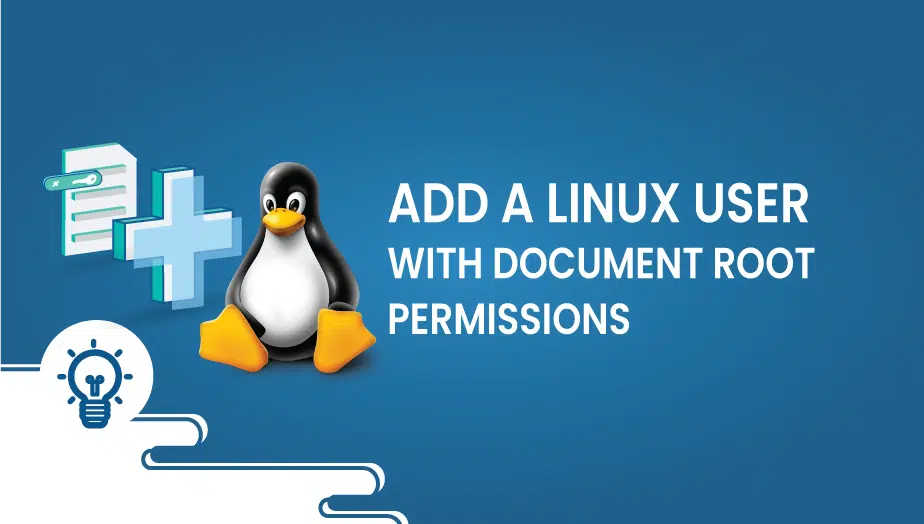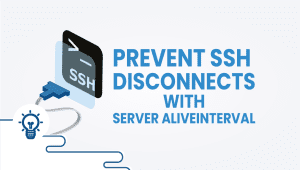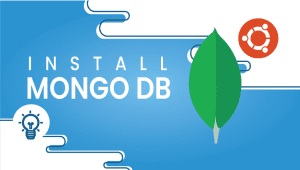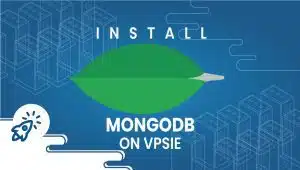Linux is a commonly used operating system in servers, supercomputers, and other embedded systems. The file permission system of Linux is one of its most assertive and adaptable features. It allows users to control access to files and directories. In this article, we’ll cover the topic of Linux users with document root permissions. We’ll explore their practical applications, benefits, drawbacks, and other options available.
What is a Linux user with document root permissions?
A Linux user with document root permissions is a user account with access to a web server’s root directory. The leading directory of a website is known as the root directory. The website is made up of all the files and directories included in it. This directory is usually set as the default. The root directory is owned by the system user “root” and has restricted access to other users.
When a Linux user is granted document root permissions, they can access and modify any file or directory within the root directory of a web server. This permission is usually given to web developers, system administrators, and other authorized personnel who need to manage a web server or website.
In this tutorial, we will show you How to Add a Linux User With Document Root Permissions.
Root is the username or account that by default has access to all commands and files on a Linux or other Unix-like operating system. It is also referred to as the root account, root user, and the superuser.
CentOS, Fedora, and RHEL
In CentOS, Fedora, and RHEL Apache is located at /var/www/html.
The first thing to do is to create a user by running this command:
sudo useradd -d /var/www/html -G apache vpsiedemo
After creating set one password.To set it run this command:
sudo passwd vpsiedemo
If you want to modify one existing user run this command:sudo usermod -a -G apache vpsiedemo
To set the group run:sudo chgrp -R apache /var/www/html
To set the permissions run:sudo chmod -R g+w /var/www/html
sudo chmod g+s /var/www/html
Ubuntu and Debian
In Ubuntu and Debian Apache is located at /var/www.
Create a user for Ubuntu and Debian by running this command:
sudo useradd -d /var/www -G www-data vpsiedemo
To set password is same as in CentOS, Fedora, and RHEL.
sudo passwd vpsiedemo
If you want to modify one existing user run:
sudo usermod -a -G www-data vpsiedemo
To set the group run:
sudo chgrp -R www-data /var/www
And to set the permissions run:
sudo chmod -R g+w /var/www
sudo chmod g+s /var/www
You have successfully Added a Linux User With Document Root Permissions.
Linux user with document root permissions Compared to other systems
Users typically have limited access to system files and directories in other operating systems, such as Windows. This is because Windows is designed for use by multiple users, and each user account is assigned specific privileges based on their roles and responsibilities.
On the other hand, Linux is a multi-user system that allows users different access levels to system files and directories. This makes it more flexible and secure than other operating systems; Users are given the lowest level of access required to complete their tasks.
Linux users with document root permissions are typically used in web hosting and development environments.
Here are some simple use cases for this type of user account:
- Web developers: Linux users with document root permissions are often granted to web developers who must deploy, manage, and modify website files and directories.
- System administrators: System administrators may use this user account to manage the web server and ensure it runs smoothly.
- Content creators: Content creators may be granted document root permissions to upload and modify website content, such as blog posts, images, and videos.
Linux user with document root permissions Features
Linux users with document root permissions have several features that make them useful in web hosting and development environments. Some of the key features include:
- Access to all files and directories within the root directory of a web server.
- Ability to modify and manage website files and directories.
- Ability to install and configure web applications and services.
- You can have detailed control over who can access your files and who owns them.
Linux user with document root permissions Advantages
There are several advantages to using Linux users with document root permissions. These include:
- Improved security: By assigning document root permissions only to authorized users, you can enhance the security of your web server and reduce the risk of unauthorized access to sensitive files and directories.
- Enhanced flexibility: Linux users with document root permissions can be assigned specific privileges based on their roles and responsibilities. With this feature, you can better manage who can access system files and directories.
- Efficient web development: With document root permissions, web developers can quickly deploy and modify website files and directories without needing additional approval or permissions.
- Customizable server configuration: With document root permissions, system administrators can configure web applications and services to meet their organization’s specific needs.
Linux user with document root permissions Disadvantages
Although Linux users with document root permissions have many advantages, there are also some potential disadvantages. These include:
- Increased risk of security breaches: If document root permissions are granted to unauthorized users or not adequately managed, it can increase the risk of security breaches and compromise sensitive data.
- Compromised system stability: If a user with document root permissions accidentally deletes or modifies a critical system file or directory, it can compromise the strength of the entire system.
- Limited collaboration: Document root permissions are typically granted to individual users, which can limit cooperation and teamwork on web development projects.
Alternative options Linux user with document root permissions
Several options exist for using Linux users with document root permissions, depending on your organization’s specific needs and requirements. Some of these options include:
- FTP users: FTP users are a common alternative to Linux users with document root permissions. FTP users are typically assigned access to a specific directory on a web server rather than the root directory. This provides security and prevents accidental modification or deletion of critical system files.
- Control panels: Many web hosting providers, such as cPanel or Plesk, allow users to manage their website files and directories through a web-based interface. This eliminates the need for users to access the root directory directly.
- Virtualization: Virtualization technologies, such as Docker or virtual machines, allow users to create isolated environments that can be used for web development and hosting. This can provide a level of security and flexibility that is not possible with traditional document root permissions.
In summary, Linux users with document root permissions are a powerful tool for web developers and system administrators. They allow for efficient web development, customization, and granular control over file permissions and ownership. However, there are potential risks and disadvantages associated with granting document root permissions to users, and alternative options should be considered based on your organization’s specific needs and requirements. Proper management and oversight are crucial to ensuring your web server’s and website’s security and stability.
A Linux user with document root permissions is a user account with access to a web server’s root directory. They can access and modify any file or directory within the root directory of a website.
Compared to other systems, Linux is more flexible and secure regarding file permissions. Users typically have limited access to system files and directories in other operating systems. In Linux, users can be assigned different access levels to system files and directories, including document root permissions.
Linux users with document root permissions are commonly used in web hosting and web development environments. Web developers, system administrators, and content creators may be granted document root permissions to deploy, manage, modify, and upload website files and directories.
Some advantages of using Linux users with document root permissions include improved security, enhanced flexibility, efficient web development, and customizable server configuration.























